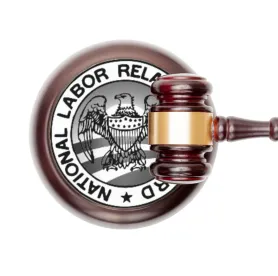If the NLRB finds that you have committed an unfair labor practice (and maybe more than once), just what can it do? In Noah’s Ark Processors, a three-member panel of the board recently took an opportunity to pronounce available punishments for repeat labor offenders, and it was not shy. An administrative law judge determined that the respondent company acted in bad faith during protracted contract negotiations with the union. The panel not only agreed with the ALJ’s proscribed remedies, but then went a good bit further to lay out the potential, non-exhaustive remedies a company may face for an unfair labor practice violation.
Background
Noah’s Ark was in contract negotiations with the union since 2018 and they were contentious, resulting in an injunction, contempt findings, sanctions, and unfair labor practice charges against the company. In 2021, the board affirmed an ALJ’s findings that the respondent had bargained in bad faith and declared impasse improperly.
Based on the injunction, the parties met for court-ordered bargaining that resulted in little progress. The court then imposed sanctions and imposed a purge plan requiring further negotiations. In response, the respondent renewed a regressive proposal before presenting a last, best, and final offer. The union rejected the proposal, the company declared an impasse, and the union filed an unfair labor practice charge. The ALJ found that the respondent had negotiated in bad faith and ordered that on request they must bargain with the union, hold employee meetings, and read the notice of violation (Appendix A in the opinion) in both English and Spanish, as well as pay for all of the union’s bargaining expenses.
On review, the board agreed with the ALJ that the respondent had acted in bad faith by declaring an impasse. In this circumstance, bad faith bargaining is shown when the purpose is to frustrate the possibility of arriving at an agreement based on the totality of circumstances. The board went further on the remedies than the ALJ, amending the remedy to order that the respondent compensate the employees for the financial harms caused by the premature last, best, and final offer.
Available Remedies
Even though neither of the parties had taken issue with the ALJ’s remedies, the board then went much further, exercising its broad discretion to order remedies. The board stated that “[b]y its actions, the Respondent has made plain its open hostility towards its responsibilities under the [National Labor Relations] Act, a hostility that by now must be obvious to the Respondent’s employees” and “concluded that remedies beyond those ordered by the judge are appropriate.” The board outlined a number of potential remedies available:
-
Adding an explanation of rights to the remedial order informing employees of their rights. According to the board, the document “informs employees of their rights in a more comprehensive manner, as is appropriate given the greater severity of the chilling effect on their willingness to exercise those rights in the face of repeated, egregious, or widespread unfair labor practices.”
-
Requiring a reading and distribution of the notice of violation and explanation of rights to the employees, including requiring a supervisor or company official be present during the reading. According to the opinion, “[n]otice reading is a way of to let in a ‘warming wind of information’ to not only alert employees to their rights but also impress upon them that, as a matter of law, their employer or union must and will respect those rights in the future.”
-
Mailing the notice and explanation of rights to the employees’ homes, so employees not only see a posted document but are able to review it privately.
-
Requiring a responsible party in the company to sign the notice, to reassure employees that the respondent is committed to compliance with the board’s order.
-
Publication of the notice in a local newspaper or publication.
-
Posting of the notice for an extended period of time. The standard notice posting period is 60 days, but in repeated or flagrant violation cases, “a respondent’s unfair labor practices are often so pervasive that their memory and impact on employees cannot be quickly erased.”
-
Visitation and inspection of the bulletin boards and records to secure compliance. The board has rejected standard visitation in the past, but would “grant narrowly tailored visitation on a case-by-case basis ‘when the equities demonstrate a likelihood that a respondent will fail to cooperate in providing relevant evidence.”
-
Reimbursement of the union’s bargaining expenses.
After providing this non-exhaustive list of available remedies, the board ordered the following specific remedies for the respondent: (1) an explanation-of-rights document (reflected in Appendix B), separate from the notice of violation; (2) the CEO signing the notice, reading the notice and explanation to the workforce, and distributing it; (3) mailing the notice to employee homes; (4) extended posting of the notice; and (5) board visitation to ensure compliance. In levying those specific remedies, the board emphasized “that in other cases, different combinations of remedies or additional remedies may be appropriate under the particular circumstances.”
Impact
The board’s broad pronouncement of available remedies against a company in a labor negotiation is noteworthy. Companies in union negotiations or in administering a union contract should take notice of the potential punishments that may be rendered under the current board and evaluate their strategies accordingly.





 />i
/>i
